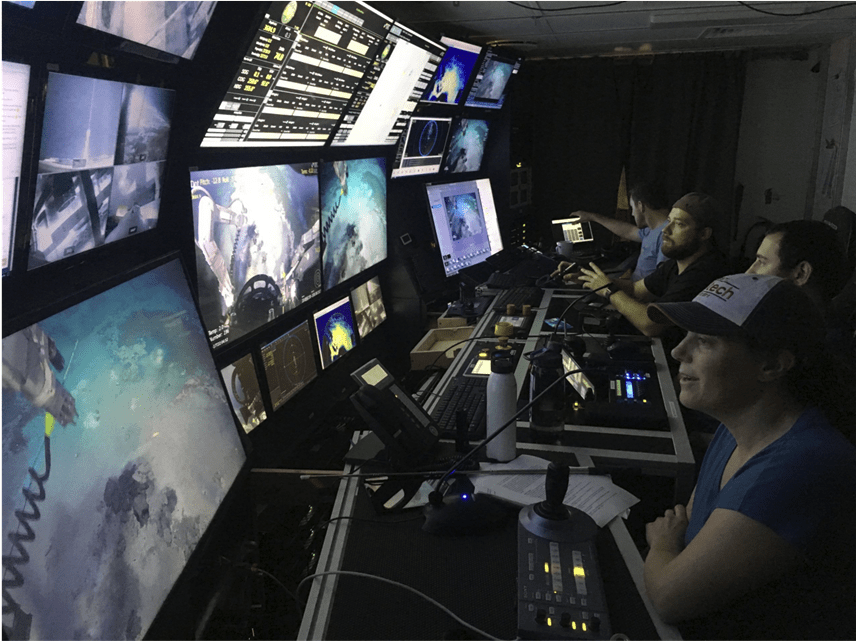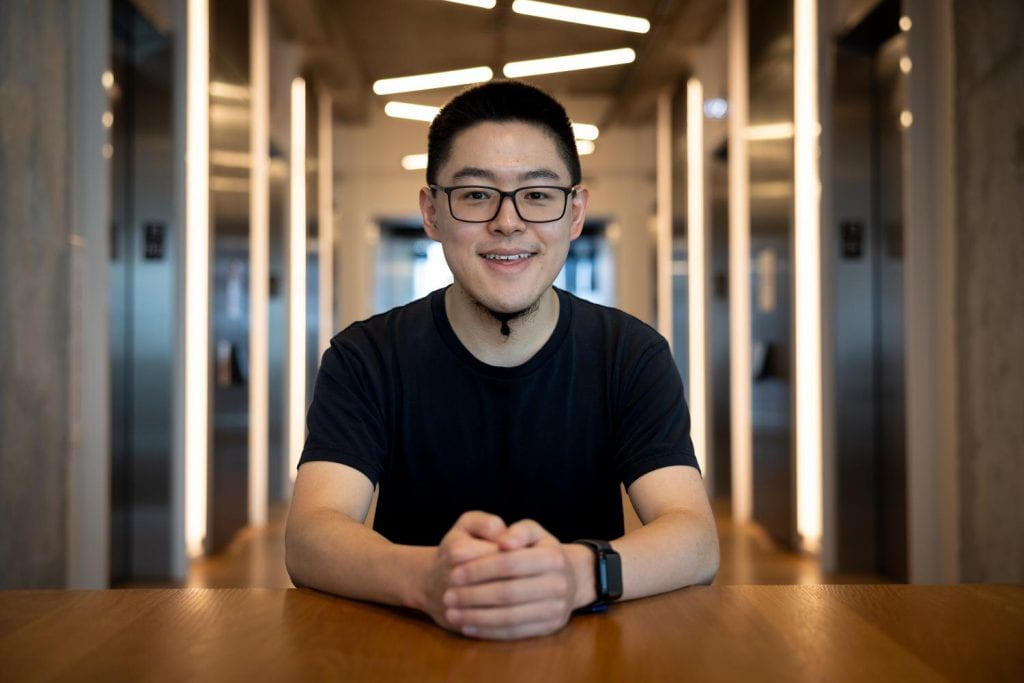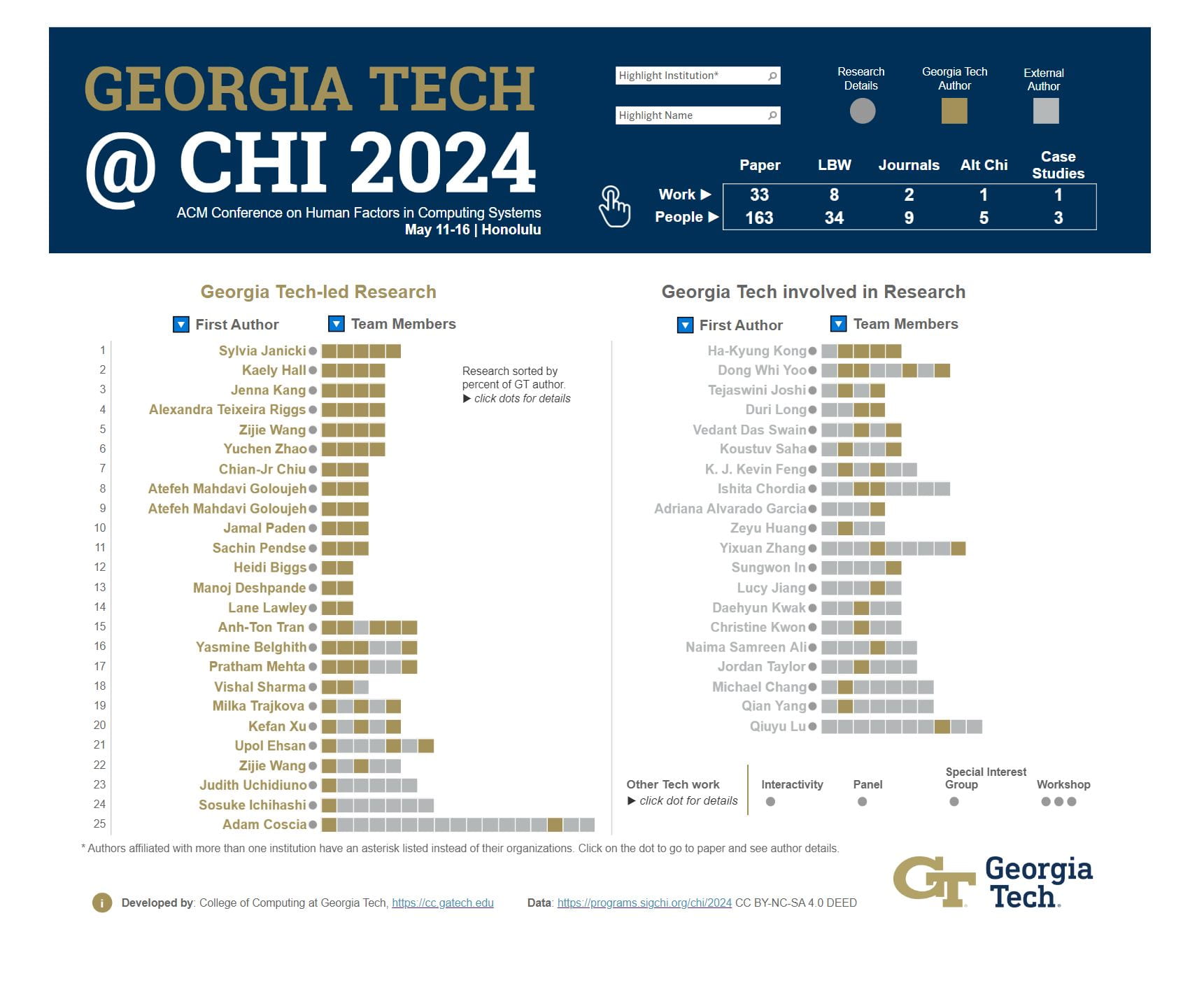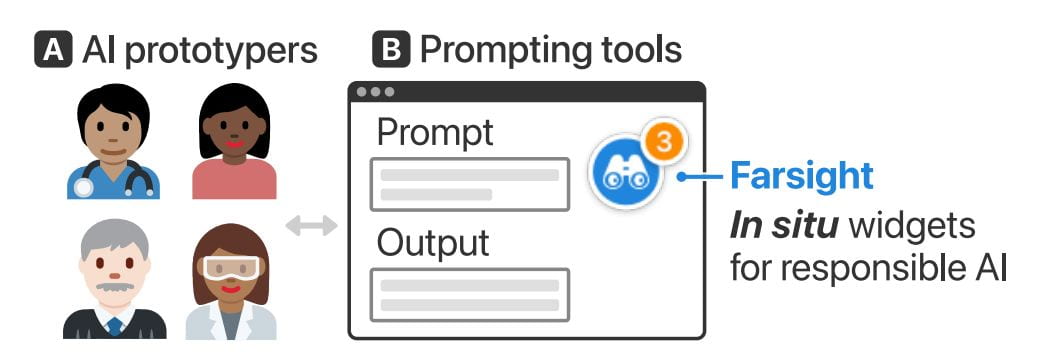CHI 2024
ACM Conference on Human Factors in Computing Systems

The speed of computing innovation is faster than ever.
Research in human-computer interaction is part of this innovation and remains paramount to shaping our future technology frontier. Meet the Georgia Tech experts who are charting a path forward. #CHI2024


The ACM Computer-Human Interaction (CHI) Conference on Human Factors in Computing Systems has been the destination for global experts in Human-Computer Interaction (HCI) research for more than 30 years. Georgia Tech is a Top 10 contributor to the technical program, a record it has maintained for well over a decade. Discover the people who are leading HCI research in the era of artificial intelligence.
Georgia Tech at CHI 2024
Explore Georgia Tech’s experts and the organizations they are working with at CHI. Georgia Tech is a Top 10 institution based on the total papers and other research activity in the technical program.
By the Numbers
Partner Organizations
Aalborg University • Accenture Labs • Art Center • California Institute of Technology • Carnegie Mellon University • Children’s Healthcare of Atlanta • Cluster Metaverse Lab • Cornell University • Costa Rican Institute of Technology • Drexel University • Emory University • Escuela Superior Politécnica del Litoral • Georgia Tech • Google • Harvard University • Hong Kong University of Science and Technology • Hugging Face • IBM Research • IIIT Delhi • Illumio • Indiana University • Integrated Design • Intel Labs • International Computer Science Institute • KAIST • Kennesaw State University • Kent State University • Lahore University of Management Sciences • Lucerne University of Applied Sciences and Arts • Meta • Microsoft • Mohammed VI Polytechnic University • Monterey Bay Aquarium Research Institute • Nokia Bell Labs • Northeastern University • Northern Arizona University • Northwestern University • NVIDIA • OMRON SINIC X • Palantir • Princeton University • PwC • Rensselaer Polytechnic Institute • Rochester Institute of Technology • Stanford University • Technische Hochschule Ingolstadt • The New York Times • The Pennsylvania State University • Tsinghua University • U.S. Department of Defense • Universiti Malaysia Pahang • University of Applied Sciences Upper Austria • University of California, Berkeley • University of California, Irvine • University of California, Santa Cruz • University of Cambridge • University of Chicago • University of Colorado Boulder • University of Edinburgh • University of Glasgow • University of Illinois at Urbana-Champaign • University of Maryland • University of Michigan • University of Notre Dame • University of Siegen • University of Texas, Austin • University of Washington • UX Indonesia • Vanderbilt University • Virginia Tech • William & Mary • Zucker Hillside Hospital
Sessions with Georgia Tech
- AI and Interaction Design
- Assistive Technologies: Work Independent Living with Neurodiversity
- Body and Wellbeing
- Case Studies: Activism
- Communication and Collaboration
- Creativity: Visualizations and AI
- Data Visualization: Geospatial and Multimodal
- Design Tools B
- Drone Interaction
- Education and AI B
- Environmental Activism
- Explainable AI
- Highlight on alt.chi
- Highlight on Diversity In HCI
- Highlight on Health
- Highlight on Learning and Education
- Immersive Experiences: Design and Evaluation
- Implications of Regulations on the Use of AI and Generative AI for Human-Centered Responsible Artificial Intelligence
- Interactivity
- Learning and Teaching Technologies B
- Mental Health and AI
- Online Communities: Engagement A
- Online Communities: Engagement B
- Panel: Sustainabilities and HCIs from the Souths
- Politics of Datasets
- Research Methods and Tools A
- Research Methods and Tools B
- Social Activism B
- Sound, Rhythm, Movement
- Supporting Accessibility of Text, Image and Video A
- Supporting Communication and Intimacy
- Trust in Social Media
- User Studies on Large Language Models
- Wellbeing and Mental Health B
- Workshop on Human-Centered Explainable AI (HCXAI): Reloading Explainability in the Era of Large Language Models (LLMs)
- Workshop on Post-growth HCI: Co-Envisioning HCI Beyond Economic Growth
- Workshop on Theory of Mind in Human-AI Interaction
Faculty
Papers Other Research Activity
The Big Picture
Georgia Tech’s 33 papers in the technical program represent ~3 percent of conference papers. Our experts are also part of contributions to Alt Chi, Case Studies, Interactivity, Journals, Late-Breaking Work, Panels, Special Interest Groups, and Workshops.
Search for people and organizations in the chart below. The first column shows Georgia Tech-led teams. Each row is an entire team, with the label showing the first author’s name. Explore more now.
Explore Research
Georgia Tech faculty and students are participating across the CHI technical program. Explore their latest work and results. Total contributions to the papers program puts Georgia Tech in the Top 10 institutions for HCI research.

Award Papers
Body and Wellbeing
Vedant Das Swain, Lan Gao, Abhirup Mondal, Gregory Abowd, Munmun De Choudhury
Online Communities: Engagement
Observer Effect in Social Media Use
Koustuv Saha, Pranshu Gupta, Gloria Mark, Emre Kiciman, Munmun De Choudhury
User Studies on Large Language Models
Farsight: Fostering Responsible AI Awareness During AI Application Prototyping
Zijie Wang, Chinmay Kulkarni, Lauren Wilcox, Michael Terry, Michael Madaio
Featured Research

DeepSee — Visualization System for Analyzing Oceanographic Data
By Nathan Deen
Lorem ipsum dolor sit amet, consectetur adipiscing elit, sed do eiusmod tempor incididunt ut labore et dolore magna aliqua. Lorem ipsum dolor sit amet, consectetur adipiscing elit, sed do eiusmod tempor incididunt ut labore et dolore magna aliqua. Lorem ipsum dolor sit amet, consectetur adipiscing elit, sed do eiusmod tempor incididunt ut labore et dolore magna aliqua. Lorem ipsum dolor sit amet, consectetur adipiscing elit, sed do eiusmod tempor incididunt ut labore et dolore magna aliqua. Lorem ipsum dolor sit amet, consectetur adipiscing elit, sed do eiusmod tempor incididunt ut labore et dolore magna aliqua. Lorem ipsum dolor sit amet, consectetur adipiscing elit, sed do eiusmod tempor incididunt ut labore et dolore magna aliqua. Lorem ipsum dolor sit amet, consectetur adipiscing elit, sed do eiusmod tempor incididunt ut labore et dolore magna aliqua.
Lorem ipsum dolor sit amet, consectetur adipiscing elit, sed do eiusmod tempor incididunt ut labore et dolore magna aliqua. Lorem ipsum dolor sit amet, consectetur adipiscing elit, sed do eiusmod tempor incididunt ut labore et dolore magna aliqua.


Farsight is a New Tool that Teaches Responsible AI Practices for Large Language Models 🔗

LLMs have empowered millions of people with diverse backgrounds, including writers, doctors, and educators, to build and prototype powerful AI apps through prompting. However, many of these AI prototypers don’t have training in computer science, let alone responsible AI practices.
Jay Wang, PhD student in Machine Learning
By Bryant Wine
Thanks to a Georgia Tech researcher’s new tool, application developers can now see potential harmful attributes in their prototypes.
Farsight is a tool designed for developers who use large language models (LLMs) to create applications powered by artificial intelligence (AI). Farsight alerts prototypers when they write LLM prompts that could be harmful and misused.
Downstream users can expect to benefit from better quality and safer products made with Farsight’s assistance. The tool’s lasting impact, though, is that it fosters responsible AI awareness by coaching developers on the proper use of LLMs.
Machine Learning Ph.D. candidate Zijie (Jay) Wang is Farsight’s lead architect. He will present the paper at the upcoming Conference on Human Factors in Computing Systems (CHI 2024). Farsight ranked in the top 5% of papers accepted to CHI 2024, earning it an honorable mention for the conference’s best paper award.
READ MORE
“LLMs have empowered millions of people with diverse backgrounds, including writers, doctors, and educators, to build and prototype powerful AI apps through prompting. However, many of these AI prototypers don’t have training in computer science, let alone responsible AI practices,” said Wang.
“With a growing number of AI incidents related to LLMs, it is critical to make developers aware of the potential harms associated with their AI applications.”
Wang referenced an example when two lawyers used ChatGPT to write a legal brief. A U.S. judge sanctioned the lawyers because their submitted brief contained six fictitious case citations that the LLM fabricated.
With Farsight, the group aims to improve developers’ awareness of responsible AI use. It achieves this by highlighting potential use cases, affected stakeholders, and possible harm associated with an application in the early prototyping stage.
A user study involving 42 prototypers showed that developers could better identify potential harms associated with their prompts after using Farsight. The users also found the tool more helpful and usable than existing resources.
Feedback from the study showed Farsight encouraged developers to focus on end-users and think beyond immediate harmful outcomes.
“While resources, like workshops and online videos, exist to help AI prototypers, they are often seen as tedious, and most people lack the incentive and time to use them,” said Wang.
“Our approach was to consolidate and display responsible AI resources in the same space where AI prototypers write prompts. In addition, we leverage AI to highlight relevant real-life incidents and guide users to potential harms based on their prompts.”
Farsight employs an in-situ user interface to show developers the potential negative consequences of their applications during prototyping.
Alert symbols for “neutral,” “caution,” and “warning” notify users when prompts require more attention. When a user clicks the alert symbol, an awareness sidebar expands from one side of the screen.
The sidebar shows an incident panel with actual news headlines from incidents relevant to the harmful prompt. The sidebar also has a use-case panel that helps developers imagine how different groups of people can use their applications in varying contexts.
Another key feature is the harm envisioner. This functionality takes a user’s prompt as input and assists them in envisioning potential harmful outcomes. The prompt branches into an interactive node tree that lists use cases, stakeholders, and harms, like “societal harm,” “allocative harm,” “interpersonal harm,” and more.
The novel design and insightful findings from the user study resulted in Farsight’s acceptance for presentation at CHI 2024.
CHI is considered the most prestigious conference for human-computer interaction and one of the top-ranked conferences in computer science.
CHI is affiliated with the Association for Computing Machinery. The conference takes place May 11-16 in Honolulu.
Wang worked on Farsight in Summer 2023 while interning at Google + AI Research group (PAIR).
Farsight’s co-authors from Google PAIR include Chinmay Kulkarni, Lauren Wilcox, Michael Terry, and Michael Madaio. The group possesses closer ties to Georgia Tech than just through Wang.
Terry, the current co-leader of Google PAIR, earned his Ph.D. in human-computer interaction from Georgia Tech in 2005. Madaio graduated from Tech in 2015 with a M.S. in digital media. Wilcox was a full-time faculty member in the School of Interactive Computing from 2013 to 2021 and serves in an adjunct capacity today.
Though not an author, one of Wang’s influences is his advisor, Polo Chau. Chau is an associate professor in the School of Computational Science and Engineering. His group specializes in data science, human-centered AI, and visualization research for social good.
“I think what makes Farsight interesting is its unique in-workflow and human-AI collaborative approach,” said Wang.
“Furthermore, Farsight leverages LLMs to expand prototypers’ creativity and brainstorm a wide range of use cases, stakeholders, and potential harms.”
New Research Embodies Queer History Through Artifacts 🔗
A research team in the Ivan Allen College of Liberal Arts has expanded its Queer HCI scholarship, using queer theory to inform the design of wearable experiences that explore archives of gender and sexuality. The project, “Button Portraits,” invites individuals to listen to oral histories from prominent queer activists by pinning archival buttons to a wearable audio player, eliciting moving personal impressions.
The researchers observed 17 participants’ experiences with “Button Portraits,” and with semi-structured interviews, surfaced reflections on how the design evoked personal connections to history, queer self-identification, and relatability to archival materials.
*the original story reported on an earlier version of the research project

“Button Portraits” is about using technology to create tangible connections to LGBTQ+ history that help people connect across generations and reflect on shared queer experiences.
Alexandra Teixeira Riggs, PhD student in Digital Media
Georgia Tech Partners with Children’s Hospital on New Heart Surgery Planning Tool 🔗
By Bryant Wine
Cardiologists and surgeons could soon have a new mobile augmented reality (AR) tool to improve collaboration in surgical planning.
ARCollab is an iOS AR application designed for doctors to interact with patient-specific 3D heart models in a shared environment. It is the first surgical planning tool that uses multi-user mobile AR in iOS.
The application’s collaborative feature overcomes limitations in traditional surgical modeling and planning methods. This offers patients better, personalized care from doctors who plan and collaborate with the tool.
Georgia Tech researchers partnered with Children’s Healthcare of Atlanta (CHOA) in ARCollab’s development. Pratham Mehta, a computer science major, led the group’s research.
READ MORE
“We have conducted two trips to CHOA for usability evaluations with cardiologists and surgeons. The overall feedback from ARCollab users has been positive,” Mehta said.
“They all enjoyed experimenting with it and collaborating with other users. They also felt like it had the potential to be useful in surgical planning.”
ARCollab’s collaborative environment is the tool’s most novel feature. It allows surgical teams to study and plan together in a virtual workspace, regardless of location.
ARCollab supports a toolbox of features for doctors to inspect and interact with their patients’ AR heart models. With a few finger gestures, users can scale and rotate, “slice” into the model, and modify a slicing plane to view omnidirectional cross-sections of the heart.
Developing ARCollab on iOS works twofold. This streamlines deployment and accessibility by making it available on the iOS App Store and Apple devices. Building ARCollab on Apple’s peer-to-peer network framework ensures the functionality of the AR components. It also lessens the learning curve, especially for experienced AR users.
ARCollab overcomes traditional surgical planning practices of using physical heart models. Producing physical models is time-consuming, resource-intensive, and irreversible compared to digital models. It is also difficult for surgical teams to plan together since they are limited to studying a single physical model.
Digital and AR modeling is growing as an alternative to physical models. CardiacAR is one such tool the group has already created.
However, digital platforms lack multi-user features essential for surgical teams to collaborate during planning. ARCollab’s multi-user workspace progresses the technology’s potential as a mass replacement for physical modeling.
“Over the past year and a half, we have been working on incorporating collaboration into our prior work with CaridacAR,” Mehta said.
“This involved completely changing the codebase, rebuilding the entire app and its features from the ground up in a newer AR framework that was better suited for collaboration and future development.”
Its interactive and visualization features, along with its novelty and innovation, led the Conference on Human Factors in Computing Systems (CHI 2024) to accept ARCollab for presentation. The conference occurs May 11-16 in Honolulu.
CHI is considered the most prestigious conference for human-computer interaction and one of the top-ranked conferences in computer science.
M.S. student Harsha Karanth and alumnus Alex Yang (CS 2022, M.S. CS 2023) co-authored the paper with Mehta. They study under Polo Chau, an associate professor in the School of Computational Science and Engineering.
The Georgia Tech group partnered with Timothy Slesnick and Fawwaz Shaw from CHOA on ARCollab’s development.
“Working with the doctors and having them test out versions of our application and give us feedback has been the most important part of the collaboration with CHOA,” Mehta said.
“These medical professionals are experts in their field. We want to make sure to have features that they want and need, and that would make their job easier.”


This surgical planning technology—developed for iOS and powered by augmented reality—is a game changer. It offers innovative ways for surgeons and cardiologists to collaborate and plan complex surgeries.
Duen Horng “Polo” Chau, Assoc. Professor in Computational Science and Engineering
See you in Honolulu!
Development: College of Computing
Project Lead/Data Graphics: Joshua Preston
News: Nathan Deen, Bryant Wine
Web Data Management: Joni Isbell
Data: https://programs.sigchi.org/chi/2024 CC BY-NC-SA 4.0 DEED

































